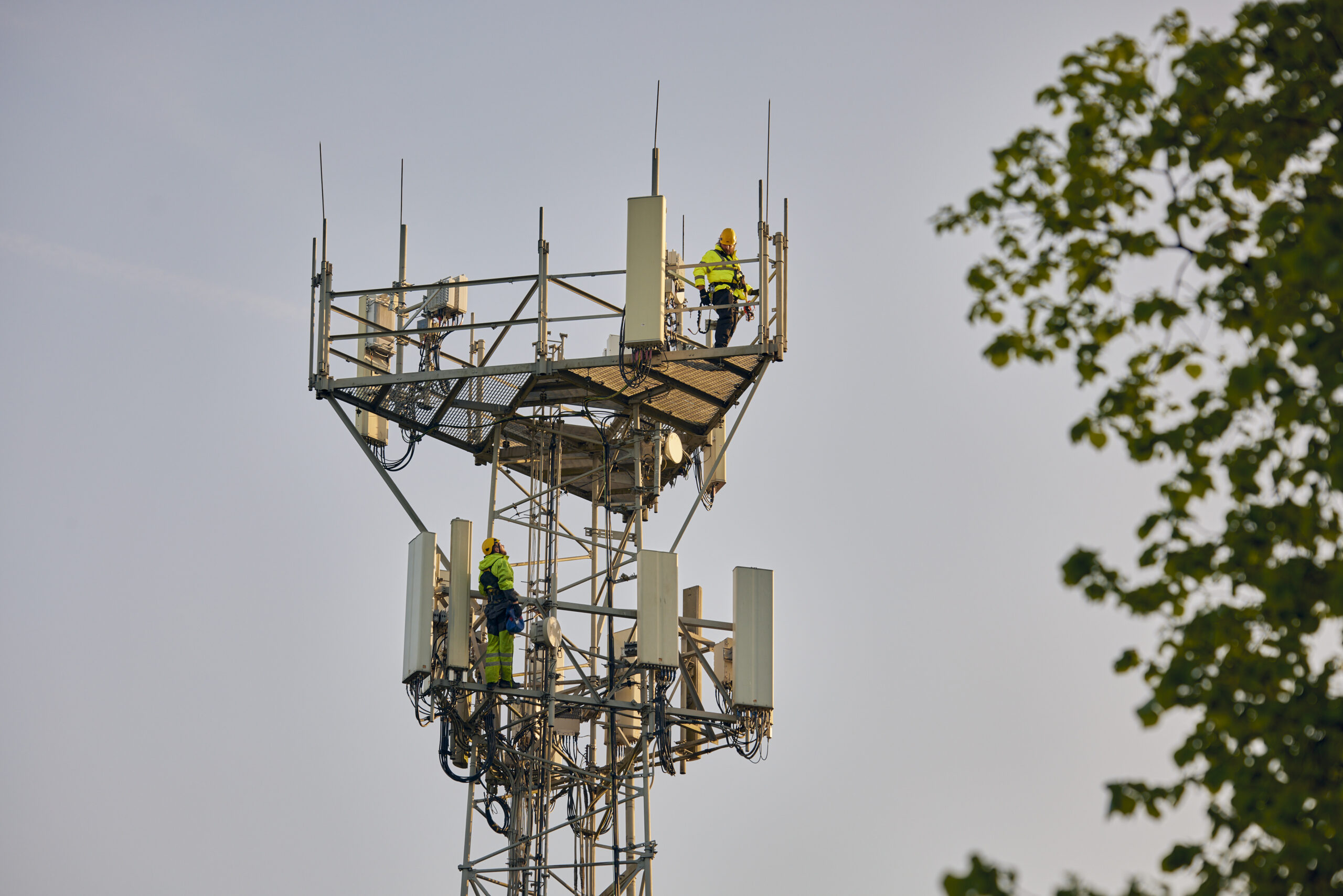Vodafone UK's high-speed network is state-of-the-art, the result of billions in investment over the last five years. But how do all the parts fit together?
The coronavirus crisis is bringing home to people just how important our mobile and fixed line broadband networks are in keeping the UK connected.
Our introductory guide explains how they all work.

IP = Internet Protocol
The Radio network
Let’s start with the most visible part of the network – masts and antennas. Whether 2G, 3G, 4G or 5G, they use radio waves to transmit voice calls, texts and internet data to and from our smartphones and other devices.
The broadcast area of each mast has to overlap a little with the next one along. This helps ensure that, even when you move out of range of one mast and into the range of another, your calls don’t drop and your mobile data continues to send and receive uninterrupted.
Masts and antennas come in all shapes and sizes, not just the lattice towers that are the most visible. To find out more about masts – why they have to be where they are and so on – read our Q&A.
Number of Vodafone sites (masts as well as smaller mini-masts and antennas) in the UK
21,000
When you make a mobile phone call, the digital signal flies through the air to the nearest mast, but from this point on it usually travels along fibre optic cables or via microwaves – known as the mobile backhaul – to our RedStream network (see below).
Home broadband
Your home broadband data takes a slightly different journey. Inside your home, your devices link wirelessly to a Wi-Fi router, but once outside the home the data is carried by fixed line.
With Vodafone Superfast broadband, a copper cable takes the data to the nearest street-side wiring cabinet which serves you and many of your neighbours. From there, fibre optic cable takes over and whisks the data to the local exchange. This is sometimes called Fibre-To-The-Cabinet (FTTC).

With Vodafone Gigafast Full Fibre Broadband, the connection from your local exchange to your home will be fibre optic all the way – hence the name ‘full fibre’, or Fibre-To-The-Home/Premises (FTTH/P). As a result, it is significantly faster, particularly with upload speeds – essential for tasks such as working from home and back-ups to cloud storage.
Once voice and internet data arrive at the local telephone exchanges they then hitch a ride on our superfast expressway, RedStream.
Residential telephone exchanges with RedStream connections
1,300
RedStream
RedStream is the backbone supporting all Vodafone UK’s telephony, video and data services – a nationwide fibre optic system running the latest technologies from the likes of Cisco, Ciena, Juniper and Nokia.
The fibre optic cables are like the motorways between sites; Internet Protocol (IP) routers and switches are like the motorway junctions.
This blisteringly fast transmission network is split into 526 geographic aggregation zones, each around the size of Bristol or Manchester, to help manage demand for data. Many of the fibre optic cables that make up RedStream will run along telegraph poles and through underground ducts and tunnels owned by Openreach.
These carry traffic to and from our core network.
Our Core network can transmit up to...
700 Gigabits per second (Gbps)
A single pair of fibres can carry up to…
hours of web browsing
50,000
hours of Facebook use
25,000
film downloads in standard definition
500-700
For many business and public sector customers, RedStream can run connections directly into their premises without needing to pass through any exchanges, making for an even faster service.
The Core network
This is the highly-protected brains of the operation consisting of several data centres – vast warehouse-sized buildings filled with racks of powerful server computers – as well as several command-and-control Network Operation Centres (NOCs) all with dedicated links to each other.
Operating round the clock every single day of the year, these facilities handle the most sensitive tasks – routing data from place-to-place, billing, customer location details, as well as security and fraud prevention.
They also handle interconnects – the secure high-capacity links between our network and those of other mobile, landline and broadband providers – ensuring your calls and data reach their ultimate destination.

Bell House Network Operations Centre at Vodafone UK’s HQ in Newbury
As you might expect, access to these facilities is highly restricted.
Our Core network is also linked via RedStream to the services that we all rely upon and enjoy, from Amazon Prime Video and NowTV, to Skype, Gmail, Facebook and Twitter.
All of these service providers run on data centres of their own, of course, and if these are based abroad, the data will flow back and forth along our extensive network of deep-sea fibre optic cables.
Dedicated engineers
So as you can see, the Vodafone UK network is complex, fast and built for the future. Teams of experienced, highly specialised engineers, technicians and programmers are needed to operate, maintain and upgrade it.

And during the coronavirus crisis they are working harder than ever to make sure our network can cope with the huge change in voice and data usage staying at home has entailed, as Vodafone UK’s Chief Technology Officer Scott Petty explains.
Despite a 30% increase in internet traffic and a 50% increase in voice traffic, Scott says the network is performing “really well”.





![Young woman using smartphone while walking in the evening on Xmas Christmas Eve [Adobe Stock]](https://www.vodafone.co.uk/newscentre/wp-content/uploads/2025/12/Young-woman-using-smartphone-while-walking-in-the-evening-on-Xmas-Christmas-Eve-Adobe-Stock.jpg)

![Queensway tunnel entrance[Adobe Stock] Queensway tunnel entrance, Mersey Tunnels.](https://www.vodafone.co.uk/newscentre/wp-content/uploads/2025/11/Queensway-tunnel-entranceAdobe-Stock.jpeg)
![Aerial view of Murrayfield Stadium[Adobe Stock] Aerial view of Murrayfield Stadium.](https://www.vodafone.co.uk/newscentre/wp-content/uploads/2025/11/Aerial-view-of-Murrayfield-StadiumAdobe-Stock.jpeg)
